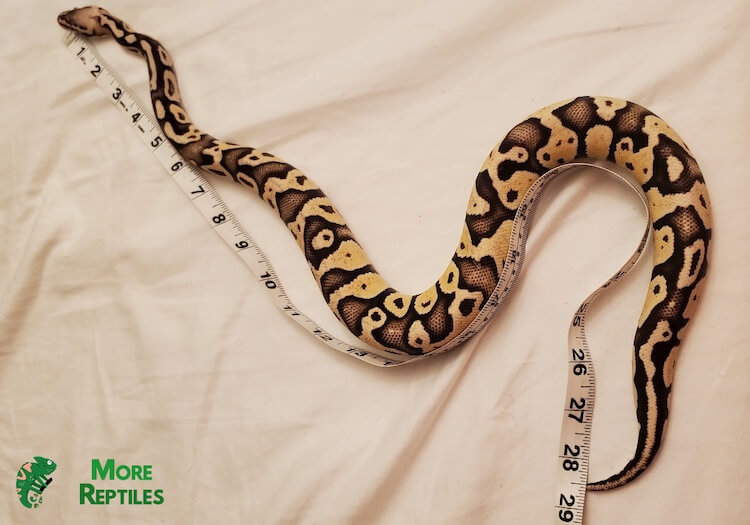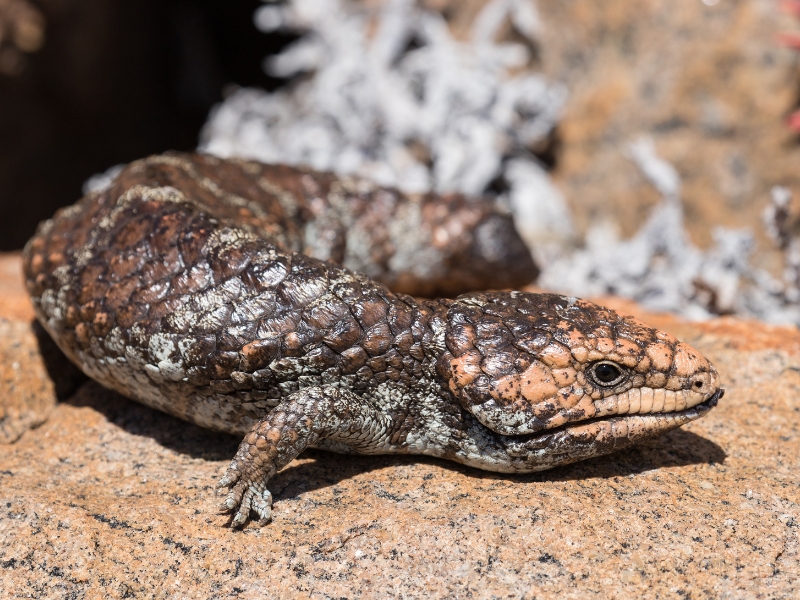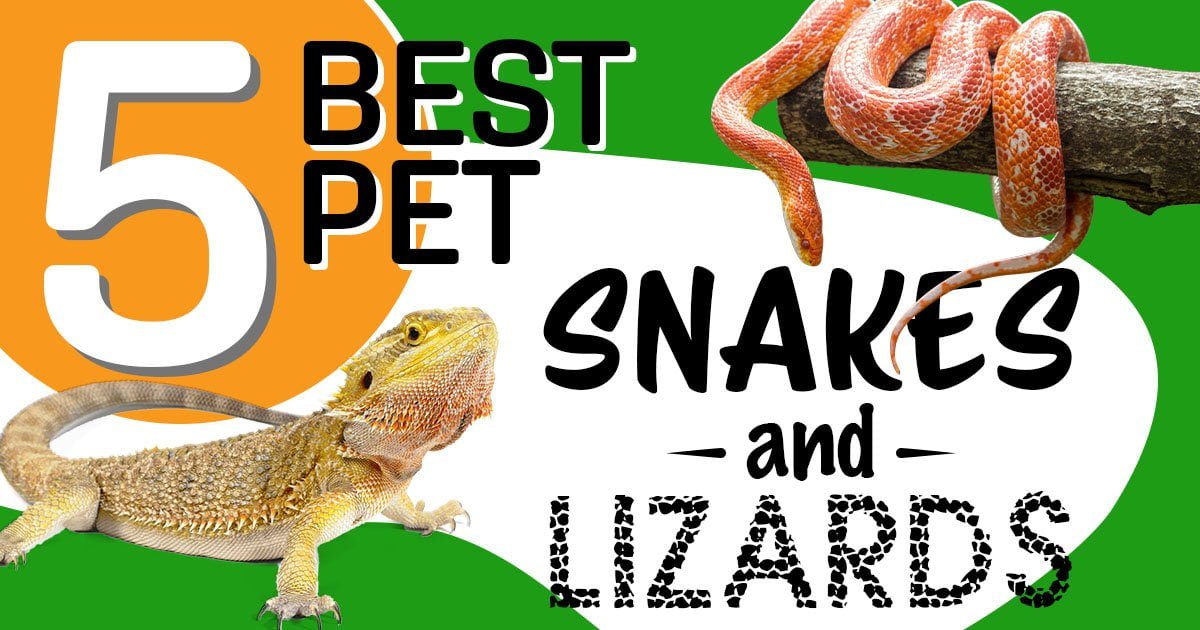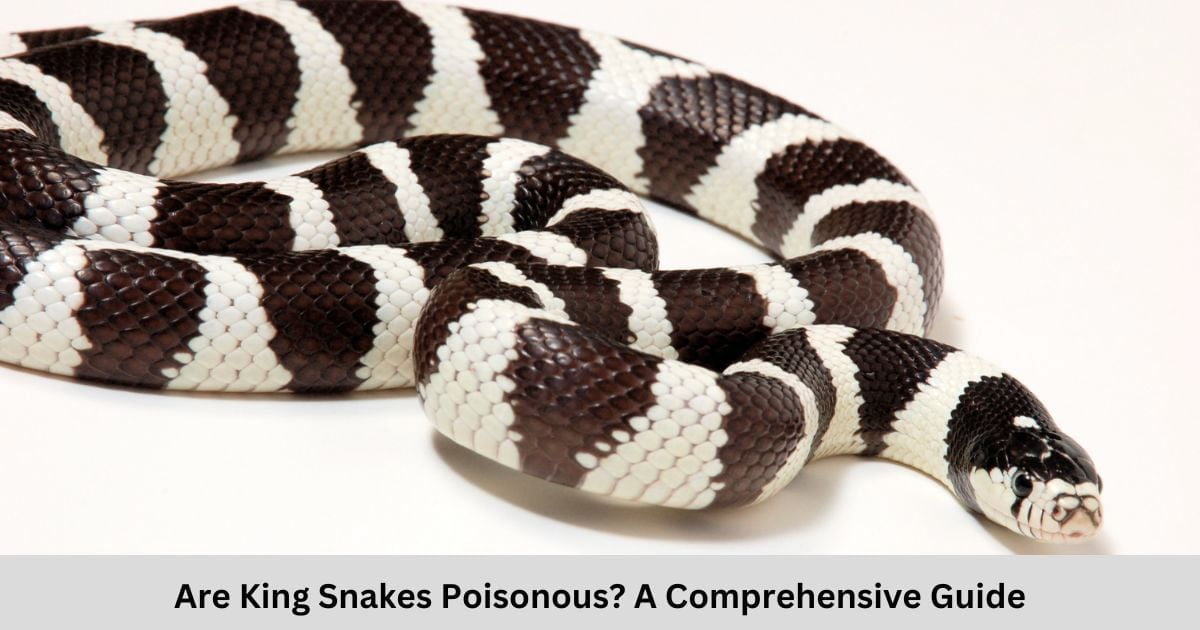There are many factors to consider when trying to tell how old a Ball Python is.
Length, weight, head size, body condition and pattern shine all give clues to a Ball Python’s age.
In most cases, you can estimate their age within a 2 year window. If they are still young, you can even make a good guess within just a few months.
For my Ball Python, I rescued her, so I know that she may be 1-2 years older than the 11 years I claim. Without knowing her breeder and clutch, it is impossible for me to know her exact age. I did, however, estimate it based on the tips I will share in this article.
Keep reading for some tips and clues to help you calculate your Ball Python’s age!
How Old Is My Ball Python?
Estimating the age of a Ball Python is done by looking at their:
- Length
- Weight
- Body condition
- Pattern
- Eyes
- Energy level
Length and weight are the best ways to age Ball Pythons under three years old.
If your snake is healthy, then it is safe to say that males under 1,000 grams or 2.5ft are likely less than three years old. The same is true for females under 1,200 grams or 4ft. You can more accurately age them based on the chart below.
Energy and behaviors are also important indicators, especially for older individuals.
Ball Pythons over 5 years old will spend more time hiding or basking in one place, while younger snakes are known to be more active.
Before trying to age a Ball Python, I would recommend a vet visit to ensure there are no health problems that could be falsely obscuring the age of your snake. Some health issues can greatly impact age estimates and slow growth rates, making it harder to estimate an accurate age.
Key Takeaways
- Males and females less than six months of age will be equal in length between 10-22 inches. After this, there is a difference in size as females grow more quickly.
- Snakes between 5-20 years old are difficult to age. Dulling patterns and an excessively large head are the only real ways to judge. Their heads continue to grow throughout their life, so older snakes will have a more square, “bobble head” appearance, when compared to their thin neck. Adults between 5-20 years old are often identified as having more spotting along the belly.
- Signs of old age in Ball Pythons include muscle loss, a squishy-fat body, dull appearance, cataracts and inability to digest large prey.
- Ball Pythons live on average 20-30 years, though many well-kept individuals have lived well into their 40s. The oldest on record is at St. Louis Zoo, being 62 years old! Regardless of the age you get your snake, expect to have many years to spend with them.
In our recent Ball Python keepers survey, 46% (12 out of 26) of participants said that their Ball Python was between 6 and 20 years old.

Ready to determine how old your Ball Python is?
How To Tell How Old A Ball Python Is
While estimating the age of a Ball Python can be difficult, especially after they have reached an adult size, there are some clues we can consider.
Length
Length is a great way to tell age in a Ball Python under four years old.

Age to Length Chart
| Age | Male Length | Female Length |
|---|---|---|
| <3 Months | 10-16 inches | 10-16 inches |
| 3-6 Months | 14-20 inches | 14-20 inches |
| 6-8 Months | 16-22 inches | 18-24 inches |
| 8-12 Months | 18-24 inches | 24-30 inches |
| 12-18 Months | 22-26 inches | 28-36 inches |
| 1.5-3 Years | 2.5-3 feet | 3.5-4.5 feet |
| >4 Years | 3-4 feet | 4.5-6 feet |
Source: How Big Do Ball Pythons Get? Size Charts By Age
Hatchlings, babies, and young juveniles (both males and females) tend to be close in size.
Under three months old, most hatchling Ball Pythons are between 10-16 inches long.
By the time they are six months old these snakes will be around 16-24 inches long. Around eight months old, the size difference between males and females starts to become obvious.
Males reach maturity at anywhere from 8-12 months old, though there is some wiggle room outside this window. You can expect a male to be between 18-24 inches by 12 months old. They will then grow slowly, gaining an average of 6-8 inches in length per year. By the time they reach three years old, their growth tapers off almost completely and most are between 2.5-3ft long.
Females reach maturity at anywhere from 1-3 years old, so their growth rate stays high for this entire period at a rate of 12-16 inches per year. By the end of their first year, females should be reaching 2-2.5ft. By three years old, females will be roughly 3.5ft to 4.5ft long. After five years, it is common for females to be anywhere from 4.5-5.5ft long!
Author Tip: It is important to note that with rescue snakes, feeding history may affect their size-age ratio. This means the size by age chart above may not be accurate for them. Underfeeding can cause slower growth, while power or overfeeding can lead to faster growth and early fat depositing.
Appearance
Young Ball Pythons will typically have a very vibrant color, with clearly defined patterns.
I noticed with my Ball Python that she began to have speckling, or color integration, around her patterns when she was nearly 7-8 years old. Since then, her color has darkened and become less distinct.
In old age these snakes will begin to lose some of their shine and become duller in appearance.
This dulling effect usually happens after 15 years old and is one of the best signs of old age in Ball Pythons.

Old injuries can also be used as a good basis for guessing Ball Python age.
If a reptile receives a burn or cut at a young age, over time they will shed that scar. After each shed the scar becomes less apparent. New scars will be less flexible and may appear to be dividing scales or interrupting the pattern. Over the course of two years, the scar will slowly shrink in size and may appear more like patches of darker color or misshapen scales.
Scars which look like they have spread unevenly often mean the injury happened in a young snake, often under one year old.
While none of my snakes have had scars, my leopard gecko did have abdominal surgery. After she shed out her stitches, her scar was a stark line. The incision was still there for about six months. Now, three years later, it is just a barely noticeable color difference.
Lastly, Ball Pythons have continuous head growth throughout their life.
Adults with a disproportionately large head, compared to their neck, will be at least 10-15 years old.

This picture above shows how older Ball Pythons tend to have larger heads compared to their necks.
Weight
The weight of males and females tends to be similar in early life stages.
Hatchlings under three months are usually between 50-85 grams, gaining enough weight to be between 100-200 grams by the six month mark.
Between six to eight months old, most Ball Pythons weigh between 300-420 grams.

Males tend to slow down at eight months old, staying between 350-600 grams by 12 months. Most males will weigh around 500-600 grams by 18 months old, depending on feeding schedules. By three years old, most are between 700-1,300 grams, and adults over four years may be between 1000-1,600 grams, though they are usually on the lower end of this range.
Females ramp up in weight by 12 months old, weighing in at 500-900 grams. You can expect a female to be 800-1,400 grams by 18 months old. Most females are between 1,200-1,800 grams at three years old, and fully matured females may reach upwards of 2,000 grams.
Age to Weight Chart
| Age | Male Weight | Female Weight |
|---|---|---|
| <3 Months | 50-85 grams | 50-85 grams |
| 3-6 Months | 100-200 grams | 100-200 grams |
| 6-8 Months | 300-420 grams | 300-420 grams |
| 8-12 Months | 350-600 grams | 500-900 gram |
| 12-18 Months | 500-900 grams | 800-1,400 grams |
| 1.5-3 Years | 700-1,300 grams | 1,200-1,800 grams |
| >4 Years | 1,000-1,600 grams | 1,500-2,000 grams |
If your Ball Python is healthy, you can use the weight chart above to estimate their age.
Power, frequent, or infrequent feedings will affect their weight gain, so it can be a bit difficult to age Ball Pythons if you don’t know their feeding history.
Health can also impact age estimates and slow growth rates, making it harder to reach an accurate age.
Ivy, my Ball Python, came to me as an underweight rescue. I was told she was two years old, but due to health problems, she was closer to the size of a 8-12 month old female. I estimate her to be about 11 years old now, but if she was really 2 years old when I took her in, it is likely she may be around 12-13 years old.
Body Condition
Body condition is also a factor in determining how old a Ball Python is.
Younger juveniles will often have a rounded-triangular shape, with a defined spine and flat stomach. This shape is due to their fast growth rate.
Older Ball Pythons have a more rounded shape, with less spine definition.
Occasionally, underweight pythons will have a very defined spine. This may falsely lead you to estimate a younger age based on weight, but they also have a sunken stomach between the ribs, which younger individuals should not have.
If a snake is well hydrated and eating, but has a squishy, sagging body, that may indicate that your python is older than 20 years old. Overweight snakes may be squishy, but they also have a more circular shape with wrinkles.
Egg Laying
Whether or not your snake is capable of breeding can also be a clue to their age.
If a male Ball Python is not responsive to breeding with a female, he may be too young to mate. Males reach maturity around 8-12 months old on average.
Females reach maturity at anywhere from 12-36 months old. If your female is successful in laying eggs, it is safe to assume she is at least this old.
As Ball Pythons age, they will produce smaller clutch sizes and have less viable eggs. Often poorly breeding females are older than 20 years old.
Signs Of Old Age

Pythons in general are very good at hiding their age. It helps them to survive in the wild.
Ball Pythons aged between 6-25 years old show very few age-related changes, other than a slight dulling in their pattern.
Aging in Ball Pythons is still being studied because pet specimens are finally reaching old age. Keeping them as pets has allowed us to extend their lifespans to a point they wouldn’t naturally reach.
In the wild, these snakes will typically die in less than 15 years due to predation and wild survivability factors.
Signs of old age can include:
- Large head
- Faded pattern
- Muscle loss
- Bumpy appearance
- Stiffness
As Ball Pythons age, their heads continue to grow slowly. This means older Ball Pythons will sometimes have a disproportionately large head, when compared to their thinner necks.
Another common change is that their pattern and color will fade and become less vivid. This is similar to how hatchlings fade in color before shedding.
Some really old snakes even get cataracts! While I have not met a Ball Python old enough for cataracts, I did work at a facility with an elderly King Cobra that had cataracts in both eyes.
A very old Ball Python may also have changes in their body condition due to muscle loss. Muscle loss will cause their spine to be more noticeable and make their fat form into lumps, giving your snake a bumpy appearance. This loose fat will also make your snake feel more “squishy” along their sides.
Elderly snakes will also experience a decrease in energy levels and an increase in stiffness. This may mean hiding more, staying in one specific spot in the enclosure, or rarely exploring at night.
Our veterinarian, Dr Ayaebi, says “Some owners report that old Ball Pythons can become frightened and senile” which is why they may hide more frequently.
The most noticeable trait of an aging Ball Python is a slowed metabolism, which becomes easy to spot when they struggle to eat larger prey.
A decreased metabolism is also usually accompanied by a decrease in function of other body systems. Elderly snakes are more likely to become dehydrated; their immune system may be less functional; and breeding success declines.
Age isn’t a disease, but it is a part of life that can’t be stopped.
There are a few things you can do to help your old Ball Python have a good geriatric life.
First, vet visits are important to check on internal organ function and ensure your snake is healthy. For an older snake I was caring for once, I would take her in for Vitamin B12 injections to boost her metabolism and energy. Also, if your snake is becoming stiff, there are even veterinary chiropractors who are learning how important spinal adjustments can be!
You can also help by feeding multiple small prey items, like 2-3 adult mice rather than one large rat to help digestion.
Larger basking platforms and lower climbing branches can also reduce injury. I think cork flats are a great alternative to provide a large, safe basking platform.



